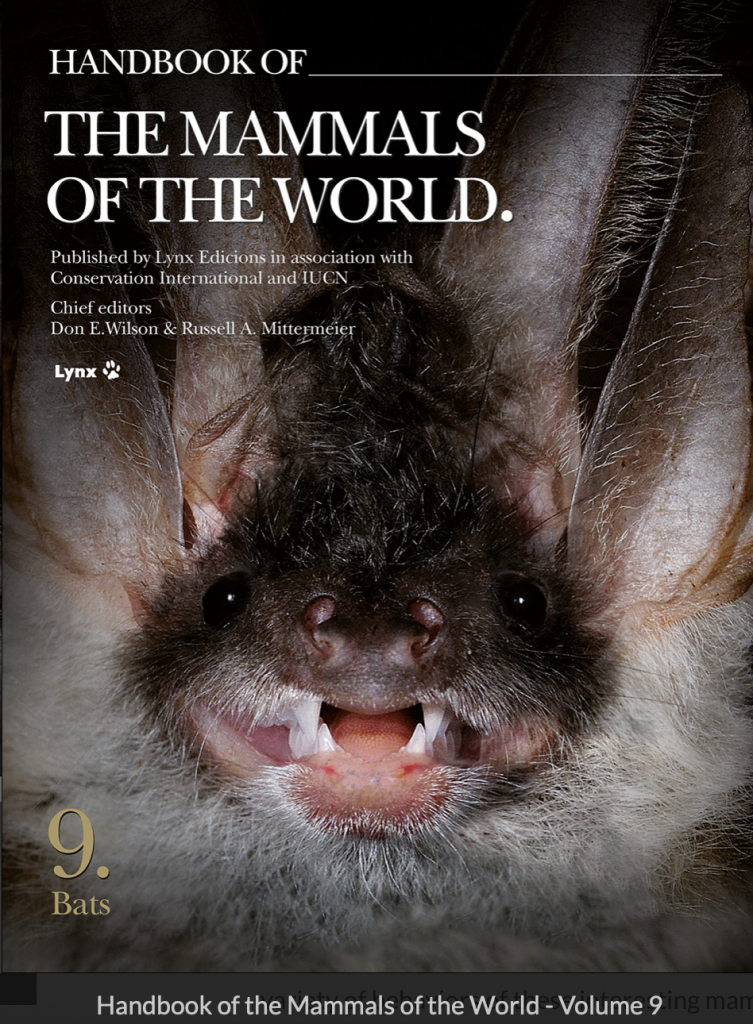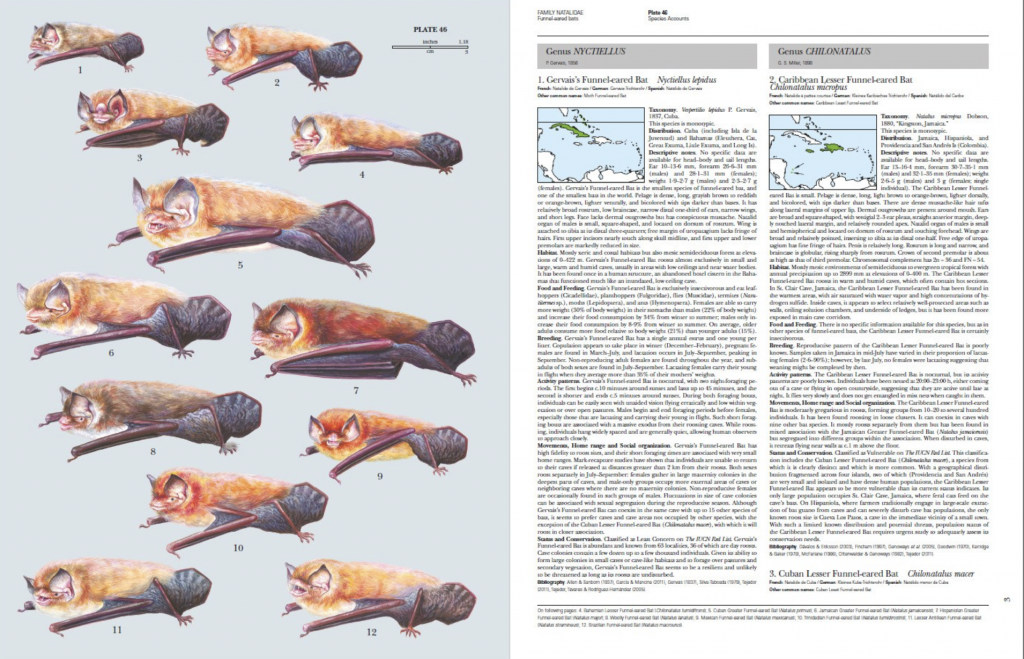Book Review: Handbook of the Mammals of the World Vol 9: The Bats

Do you remember, way way back in 2009, when the first volume of the Handbook of the Mammals of the World was published? I was so excited. But I was also skeptical that the entire set would ever see the light of day. I also remember wondering whether I would live long enough to see the whole set.
Yet here we are ten years later. I’ve changed wives, continents and my mammal list has doubled. And now the 9th – and final – volume has just arrived in the mail. This last book covers the 1400 bat species. Yes, 1400 species – 20 years ago there were around 1000. I haven’t done the maths, but I suspect the taxonomy of the bats is changing more rapidly than any for any other mammals. Pretty selfish of these scientists. How am I supposed to see all the world’s mammals with tactics like this!
This latest book is a remarkable feat in itself. But think about the work it has taken to produce the whole series: sorting out the latest taxonomy; finding thousands of pictures; writing accounts for every species and finding the right people to author them; preparing illustrations for every mammal on the planet. This was a Herculean project and I am sure that many mammal watchers are extremely grateful to all involved. Though these books are not field guides, I find I am using them more and more, especially now the volumes covering the smaller mammals have come out. Many of the species in the most recent books do not appear in any field guide.
The final volume ensures the handbook ends on a high note. I have not read it in detail yet, and I am sure there will be disagreements with some of the taxonomic choices. But the photographs are fabulous, and feature several people who regularly report on this site – I quickly spotted pictures from Vladimir Dinets Jose Gabriel Martinez and a few from me. Some of the in flight shots in particular are superb – I probably shouldn’t add any of them here for copyright reasons but check out a selection on the publisher’s site. I also recognized most of the contributing authors, many of whom have been kind enough to answer questions from me over the years. Bat people are often the most friendly and passionate of all mammalogists.

It is hard to assess how useful the plates will be until I actually try to use the book to identify a bat. I know well the frustration of flicking between illustrations of three similar looking species and trying to figure out how they differ. My feeling is that the plates are pretty good and that they will be more useful at differentiating between species than some of the illustrations in the rodent volumes for example.
Most people reading this will doubtless be familiar with the overall format of this series and this book doesn’t deviate from that. But if you are not familiar with the handbook you really want to be! So this last volume might well be a good place to start.
The handbooks are all available from Lynx publishing, and many bookstores around the world.
3 Comments
-
Mateusz Ciechanowski
Some plates are really, really low quality, much lower than in previous volumes. Either because of low quality of print (mostly too dark or too low resolution), but some because of extremely low quality of artwork. Sad and dissapointing. That’s because they hire more artists than The One, Toni Llobet.
-
VLADIMIR DINETS
There’s plenty of excellent artists to choose from. I don’t know what they were thinking. They didn’t even contact Fiona Reid AFAIK.
Leave a Reply
You must be logged in to post a comment.


Conuropsis
Can’t wait to get mine. Should be soon. If you think it was a chore to do almost 5000 mammals, imagine doing 10,000+ birds in 15 volumes for the HBW series, plus the two additional volumes! Both are excellent and I love them all. Well worth the money.
Andrew